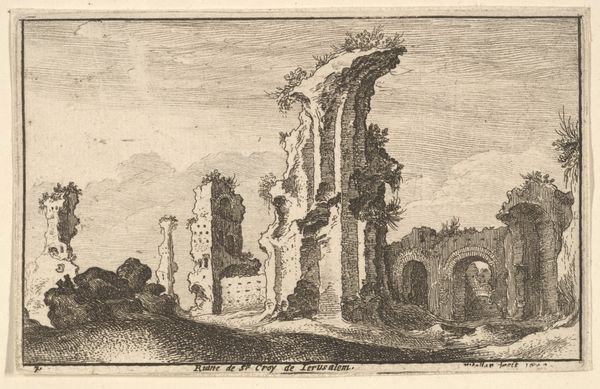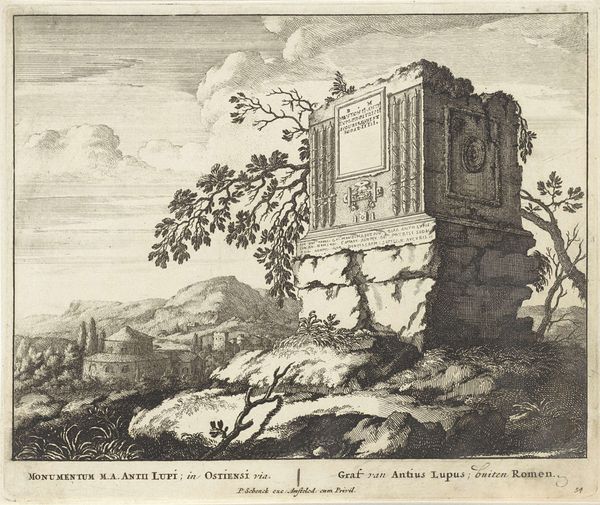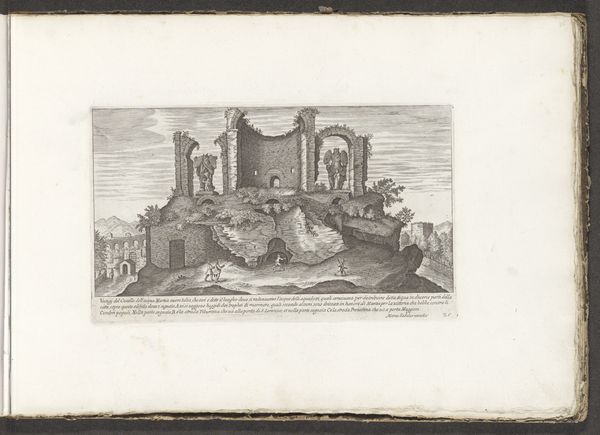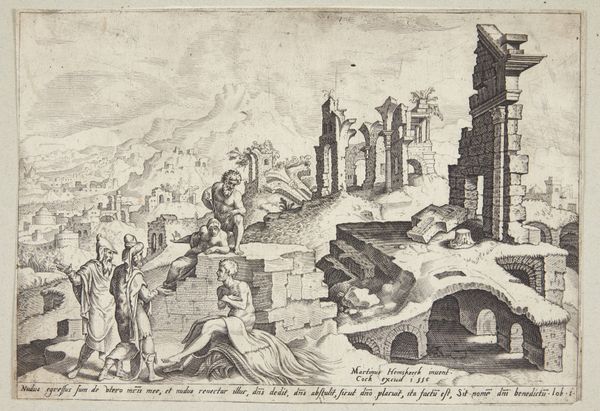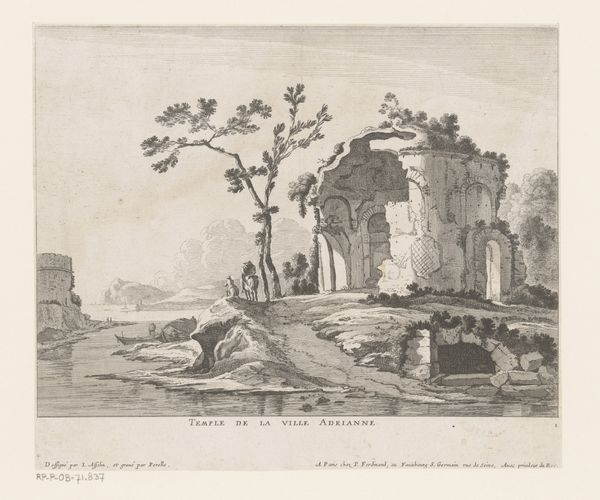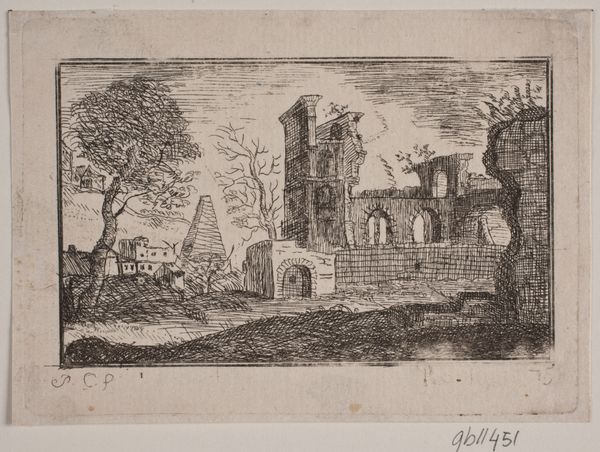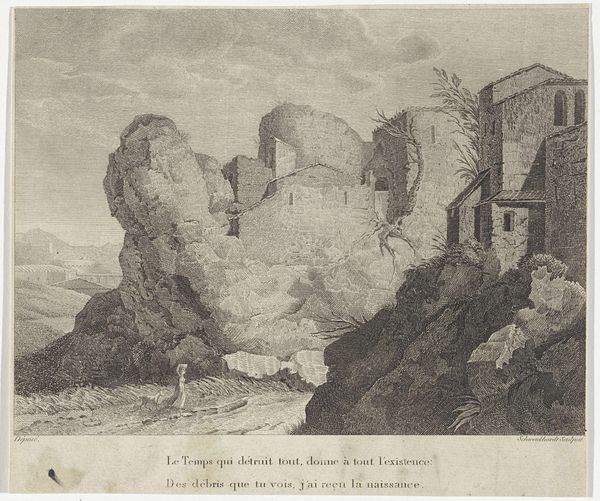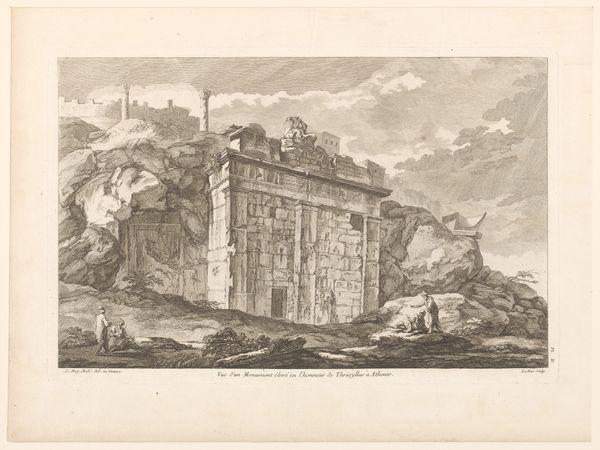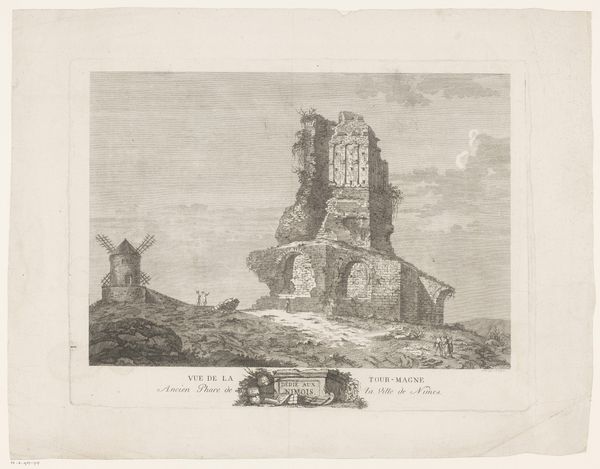
Ruins and a barred gate on the Esquiline Hill in Rome 1673
0:00
0:00
drawing, print, etching
#
drawing
#
baroque
# print
#
etching
#
landscape
#
history-painting
Dimensions: Sheet: 2 13/16 × 4 3/16 in. (7.2 × 10.7 cm)
Copyright: Public Domain
This print, "Ruins and a barred gate on the Esquiline Hill in Rome," was made in 1673 by Wenceslaus Hollar. It's an etching, meaning that the image was incised into a metal plate, probably copper, with acid. Look closely at the lines, and you can see how Hollar used different densities of marks to create a sense of light and shadow. This was an efficient way of reproducing images, quite different than drawing or painting. Etchings like this were made in multiples, and were a commodity. They helped to fuel an interest in the picturesque, and the aesthetic of ruins, at a time when European culture was obsessed with the passage of time. Think about the labor involved – not just the artist's skilled hand, but also the work of the printers who would have made many impressions from the plate. Hollar's print collapses art, craft, and industry. This piece reminds us that even the most seemingly straightforward images have a complex story to tell about production and consumption.
Comments
No comments
Be the first to comment and join the conversation on the ultimate creative platform.
